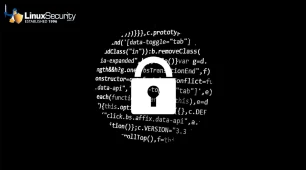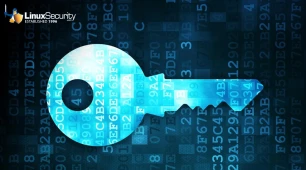
Since Linux has become such an indispensable backbone of servers, embedded systems, and IoT devices across industries, its attractiveness as a target of sophisticated cyber threats has increased substantially. Recently, Fortinet researchers made headlines when they unearthed an advanced rootkit malware preying on Linux systems by exploiting zero-day vulnerabilities to gain control and avoid detection - an alarming discovery for us admins responsible for safeguarding against evolving threats to secure their Linux environments.
Here, we explore details regarding this malware and implications and best practices for safeguarding your Linux systems against emerging malware threats.
A Deeper Look into the Advanced Rootkit Malware
 This latest rootkit malware stands out for its sophisticated infiltration and persistence methods. Accessed through an innocent-appearing shell script named Install.sh, this piece of malware achieves complete system penetration and deep integration that allows attackers to intercept network traffic and remotely manipulate compromised devices. While lesser threats might compromise system performance or generate warnings through apparent modifications, this rootkit has been designed with subtlety in mind. Its goal is to blend into Linux environments, obfuscating detection by antivirus software systems.
This latest rootkit malware stands out for its sophisticated infiltration and persistence methods. Accessed through an innocent-appearing shell script named Install.sh, this piece of malware achieves complete system penetration and deep integration that allows attackers to intercept network traffic and remotely manipulate compromised devices. While lesser threats might compromise system performance or generate warnings through apparent modifications, this rootkit has been designed with subtlety in mind. Its goal is to blend into Linux environments, obfuscating detection by antivirus software systems.
Zero-day vulnerabilities are at the core of this malware's success, enabling it to bypass traditional security measures and install rootkits undetected. Not having been previously identified or patched, these zero-day flaws provide attackers with an avenue for installation without setting off alarms - showing once again why proactive risk management practices must include testing systems for potential weaknesses and engaging regularly with cybersecurity communities to keep informed of emerging threats.
Understanding The Significance for Security Administrators
Rootkit malware has become a serious concern for Linux admins. When uptime and reliability are critical, any undetected rootkit presence could result in in data breaches, unwarranted access to sensitive data, and even system downtime - potentially disastrous repercussions for all involved. Furthermore, its ability to hijack network traffic threatens infected devices and potentially even entire networks, as this malware can subtly exfiltrate data remotely.
Given these risks, we must adopt a holistic approach to security. This requires going beyond simply patching known vulnerabilities with practices designed to ensure system integrity and resilience against unknown threats. Regular system updates, carefully reading security advisories, and installing robust intrusion detection systems all play key roles in an effective security strategy.
Best Practices for Mitigating Advanced Malware Threats
 Combating advanced malware like this rootkit requires a multilayered security strategy. Logs provide a window into what activities are taking place within a system, and by setting alerts for unusual activities or anomalies, administrators can identify potential threats in advance. For instance, suspicious logins, unexpected network activity, or attempts at configuration changes should trigger immediate investigations.
Combating advanced malware like this rootkit requires a multilayered security strategy. Logs provide a window into what activities are taking place within a system, and by setting alerts for unusual activities or anomalies, administrators can identify potential threats in advance. For instance, suspicious logins, unexpected network activity, or attempts at configuration changes should trigger immediate investigations.
Protecting startup scripts is also of utmost importance, as malicious actors often target these scripts to ensure their malware runs every time a system boots up. By applying strict permissions and auditing startup scripts regularly, administrators can protect themselves from any alterations or additions by any malicious actors that might attempt to target these startup scripts.
Network monitoring is also an integral component of threat detection and mitigation. Traffic analysis can reveal anomalies that are not immediately noticeable at the system level. Network security tools that inspect outgoing and incoming connections may reveal irregular patterns or communications from known malicious IPs.
Access controls are another essential tool in the fight against malware. By following the principle of least privilege, users and applications only receive the permission they need for their functions - reducing any entry points for malware. Regular audits help refine these controls further and identify any unnecessary rights that require removal.
Rootkit detection tools can also significantly enhance an organization's defense capabilities. These tools are specifically designed to identify hidden threats that evade traditional security solutions, so security admins should integrate rootkit detection tools into their regular scanning routines and ensure they are frequently updated to recognize new rootkit variants.
Our Final Thoughts on The Rising Threat of Zero-Day Rootkits in Linux Environments
The discovery of this advanced rootkit malware aimed at Linux systems is a stark reminder of the rapid advancement of cyber threats, highlighting their ever-increasing sophistication and pervasive nature. For us security administrators, it highlights the necessity of taking an integrated and proactive approach to security. Understanding these complex attacks while taking measures such as using up-to-date tools and techniques and instilling security-first cultures can better protect organizations against not only this rootkit but future threats as well to ensure system integrity while safeguarding essential data.

















